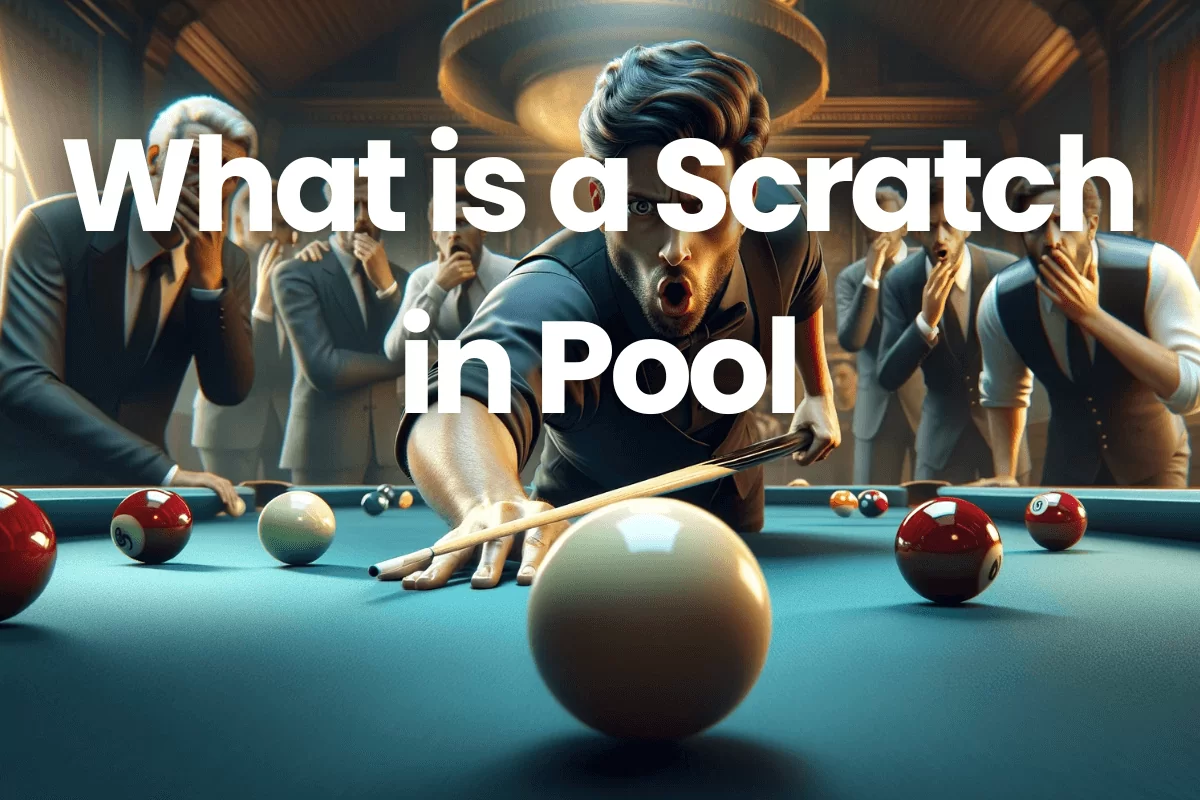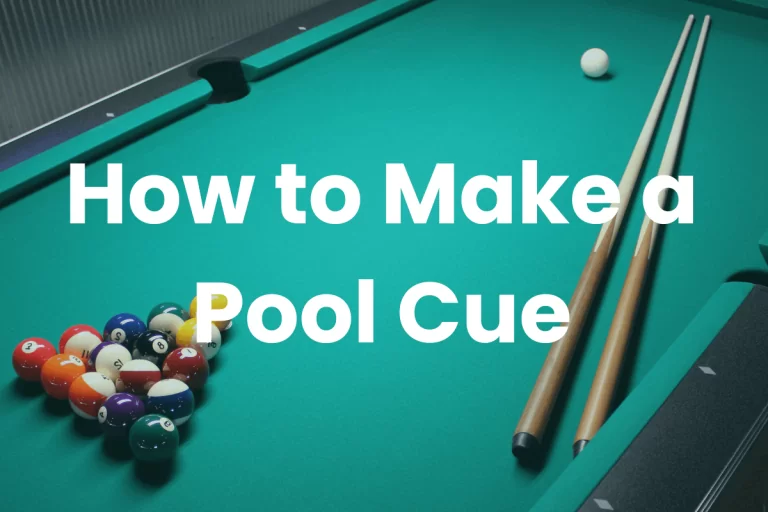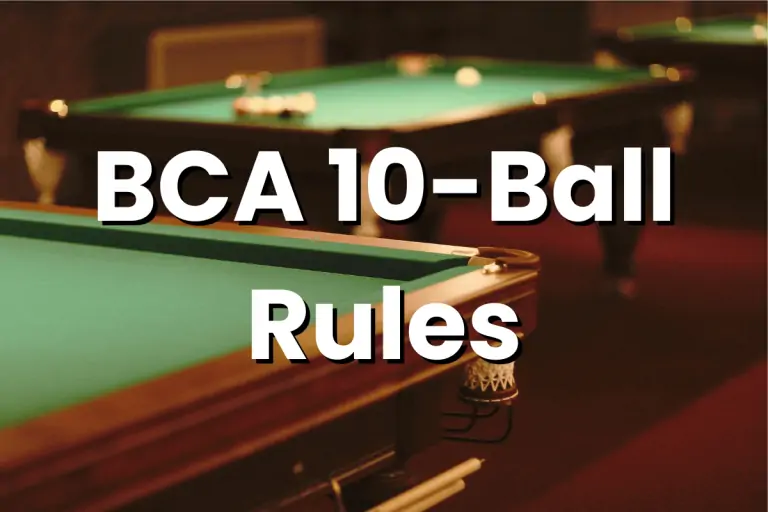Understanding Scratch in Pool: Rules, Penalties, and Strategies (2023)
Welcome to the captivating world of pool, a game where skill, strategy, and a bit of luck intertwine! Understanding the rules is key to not just playing but excelling in this classic game. Whether you’re picking up a cue for the first time or honing your skills, learning how to play pool is an exciting journey. Our focus here is to dive deep into the scratch in pool rules, unraveling its nuances to give you a comprehensive understanding. Whether you’re a beginner or a seasoned player, knowing about scratches is crucial in mastering the game.
what is a scratch in pool?
In the realm of pool, a scratch is one of those moments that can make or break a game. But what exactly is a scratch? Simply put, it happens when the cue ball, the white one you hit, finds its way into a pocket or jumps off the table during your shot.
Let’s talk scenarios. The most common scratch is when you accidentally pocket the cue ball – a classic oops moment. Then there’s the less frequent but equally disruptive instance where the cue ball flies off the table, often due to an overly powerful shot.
what happens when you scratch in pool?
When you commit a scratch in pool, it’s more than just a simple mistake; it brings with it specific penalties that can significantly affect the game’s flow. Here’s a breakdown of what happens after a scratch:

Penalties Resulting from a Scratch:
The most immediate consequence of a scratch is losing your turn. This hands over the control of the table to your opponent.
The most significant penalty is that your opponent gets the cue ball in hand. This means they can place the cue ball anywhere on the table for their next shot, giving them a strategic advantage.
Impact on Gameplay and Turn Sequence:
A scratch disrupts the rhythm of the player who committed it. It can halt a winning streak or a series of successful shots, shifting the momentum to the opponent.
For the opponent, a scratch can be a turning point, especially if they were previously at a disadvantage. It provides an opportunity to take control of the table and potentially clear a difficult layout.
Ball Placement and Opponent Advantages:
The cue ball-in-hand rule is a significant advantage. The opponent can place the cue ball in a position that offers the best chance for a successful shot, whether it’s to pocket a difficult ball, break a cluster, or set up for future shots.
In games like 9-ball, where the order of pocketing the balls is crucial, having the cue ball in hand can be a game-changing advantage.
Types of Pool Games and Scratch Rules
The rule of a scratch varies across different types of pool games, each bringing a unique twist to how the game is played post-scratch. Let’s look at how a scratch affects some popular pool games:
8-Ball Pool:
In 8-ball, if you scratch while pocketing the 8-ball, you lose the game. However, if you scratch before all your group of balls are pocketed, your opponent gets the cue ball in hand, placing it anywhere on the table.
9-Ball Pool:
In 9-ball, the scratch rule is quite stringent. Any scratch results in a cue ball in hand for the opponent. This can be especially crucial given the sequential nature of the game, where each ball must be hit in numerical order.
Straight Pool:
Straight pool, also known as 14.1 continuous, has a unique approach to scratches. A scratch results in a penalty of one point. Additionally, the opponent receives the cue ball in hand but must shoot from behind the head string, targeting balls outside the head string area.
In each of these games, the scratch rule is designed to penalize mistakes while offering the opponent a fair chance to capitalize on the error. Knowing these rules is vital as it influences not only how you play your shot but also your overall game strategy in different pool game variants.
Avoiding Scratches: Tips and Techniques
Avoiding scratches in pool is crucial for maintaining control of the game and keeping the momentum on your side. Here are some tips and techniques to help prevent those unwanted fouls:
Cue Ball Control:
Mastering cue ball control is key. Practice controlling the speed and direction of the cue ball with each shot. The more control you have, the less likely you are to scratch.
Experiment with different amounts of force and observe how the cue ball reacts. This understanding will help you make more informed shots.
Aiming with Precision:
Focus on your aiming technique. Ensure that you’re lining up shots correctly to avoid inadvertently sending the cue ball into a pocket.
Practice drills that enhance your precision and help you understand angles better. Consistently hitting the cue ball at the correct angle will reduce the chance of a scratch.
Strategic Shot Selection:
Always consider the potential outcomes of a shot before taking it. If there’s a high risk of scratching, it might be better to choose a different shot.
Sometimes, playing a defensive shot is better than going for a difficult offensive shot that could result in a scratch.
Develop the ability to foresee the cue ball’s path post-impact. This foresight can help you avoid shots that might lead to a scratch.
Practice Defensive Playing:
Learn and practice safety shots. These shots are designed to make it hard for your opponent to pocket a ball while also minimizing your risk of scratching.
Safety shots often involve leaving the cue ball in a position that is not advantageous for your opponent, reducing the chances of both their success and your scratching.
By focusing on cue ball control, precise aiming, strategic shot selection, and defensive play, you can significantly reduce the likelihood of committing a scratch.
Common Myths and Misconceptions
In the world of pool, several myths and misconceptions about scratches persist, often leading to confusion among players. Let’s clear up some of these common misunderstandings with expert insights:
Scratching on the Break is an Automatic Loss
In most standard games of pool, including 8-ball and 9-ball, scratching on the break does not result in an automatic loss. It typically results in a foul, giving the opponent the cue ball in hand. The exception is if you pocket the 8-ball on the break in 8-ball, which is a loss.
You Can Hit Any Ball After a Scratch
After a scratch, the incoming player must often play the cue ball from a specific location (like behind the head string in 9-ball) and is typically required to hit the lowest-numbered ball on the table first in games like 9-ball.
A Scratch is Always a Disadvantage
While a scratch is generally unfavorable, sometimes players use a strategic ‘intentional scratch’ when they have no viable shots. This move can leave the opponent in a difficult position, although it gives them cue ball in hand.
Any Ball Pocketed on a Scratch Stays Pocketed
In games like 8-ball, if you pocket one of your balls but also scratch, the pocketed ball is typically left in the pocket. However, in 9-ball, pocketed balls are usually returned to the table after a scratch.
Scratching is the Same in Every Pool Game
The rules and consequences of a scratch vary depending on the game type. For example, in a straight pool, a point is deducted for a scratch, while in 8-ball and 9-ball, it results in a cue ball in hand for the opponent.
Conclusion
understanding what constitutes a scratch in pool, its varying consequences across different games, and strategies to avoid it are crucial for any player. Remember, mastering these aspects can significantly elevate your gameplay. We encourage you to apply this knowledge at the pool table and see the difference it makes. Feel free to share your experiences or ask further questions. Your feedback helps us all grow in the game we love. Keep practicing, and happy cueing!
FAQs
What happens to other balls pocketed during a scratch?
In most pool games, like 8-ball, balls pocketed on a scratch remain pocketed, except for the 8-ball, which would result in a loss if pocketed prematurely. However, in 9-ball, any balls pocketed during a scratch are typically spotted back on the table, except if the scratch occurs on the break shot. Rules can vary, so it’s always good to clarify this aspect before starting a game.
If I scratch, does my opponent always get the cue ball in hand?
In most popular pool games like 8-ball and 9-ball, a scratch results in the cue ball in hand for the opponent. However, where they can place the cue ball varies by game rules.
Are there any situations where a scratch could be considered a strategic move?
Yes, in certain scenarios, an intentional scratch might be used strategically to leave the opponent in a difficult position, even though it gives them cue ball in hand.
What’s the best way to avoid scratches in pool?
Improving cue ball control, being mindful of shot selection, and practicing precise aiming are key to reducing the likelihood of a scratch. Understanding the angles and force required for different shots can also help.







